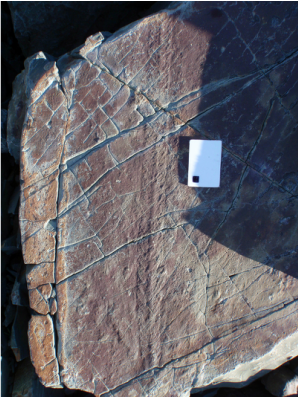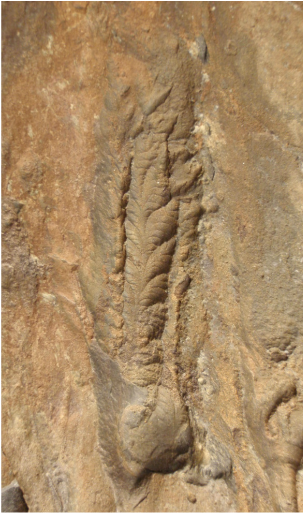TREPASSIA WARDAE
NARBONNE ET AL., 2009
|
Trepassia is a long and slender rangeomorph that was initially considered a species of the genus Charnia (and named Charnia wardii). It was later reassigned to a genus in its own right; Trepassia, a name derived from the French for 'those that have departed forever', and honouring the community of Trepassey, Newfoundland, which is close to Mistaken Point. The species name, wardae, commemorates the Ward family, who live close to the site from which several Trepassia specimens have been described, and who once foiled an attempt by fossil collectors to remove fossils from the Newfoundland coastline.
Trepassia is one of the oldest known rangeomorphs, and was also one of the largest - specimens can be well over a metre in length! Trepassia lived on the ocean floor, where it was attached to the sediment by a bulb-like holdfast. Described from: Newfoundland, Canada Key papers: Narbonne et al., 2009 Brasier et al., 2012 Diagnosis: Frond unipolar, comprising two rows of irregularly spaced primary branches arranged along a furled central axis, commonly forming a linear suture. Inflation of first-order branches is moderate with no clear direction, while that of second-order branches is mainly medial. Alignments of first-order branches are subparallel. Those of second- and third-order branches within a single specimen are more irregular and range gradually or switch abruptly from subparallel to distinctly radiate. Mature first- to third-order branches have furled margins, with rangeomorph elements that are rotated and undisplayed. A basal disc is sometimes preserved. (amended, after Brasier et al. 2012).
|
Trepassia from Spaniard's Bay, Newfoundland
|


